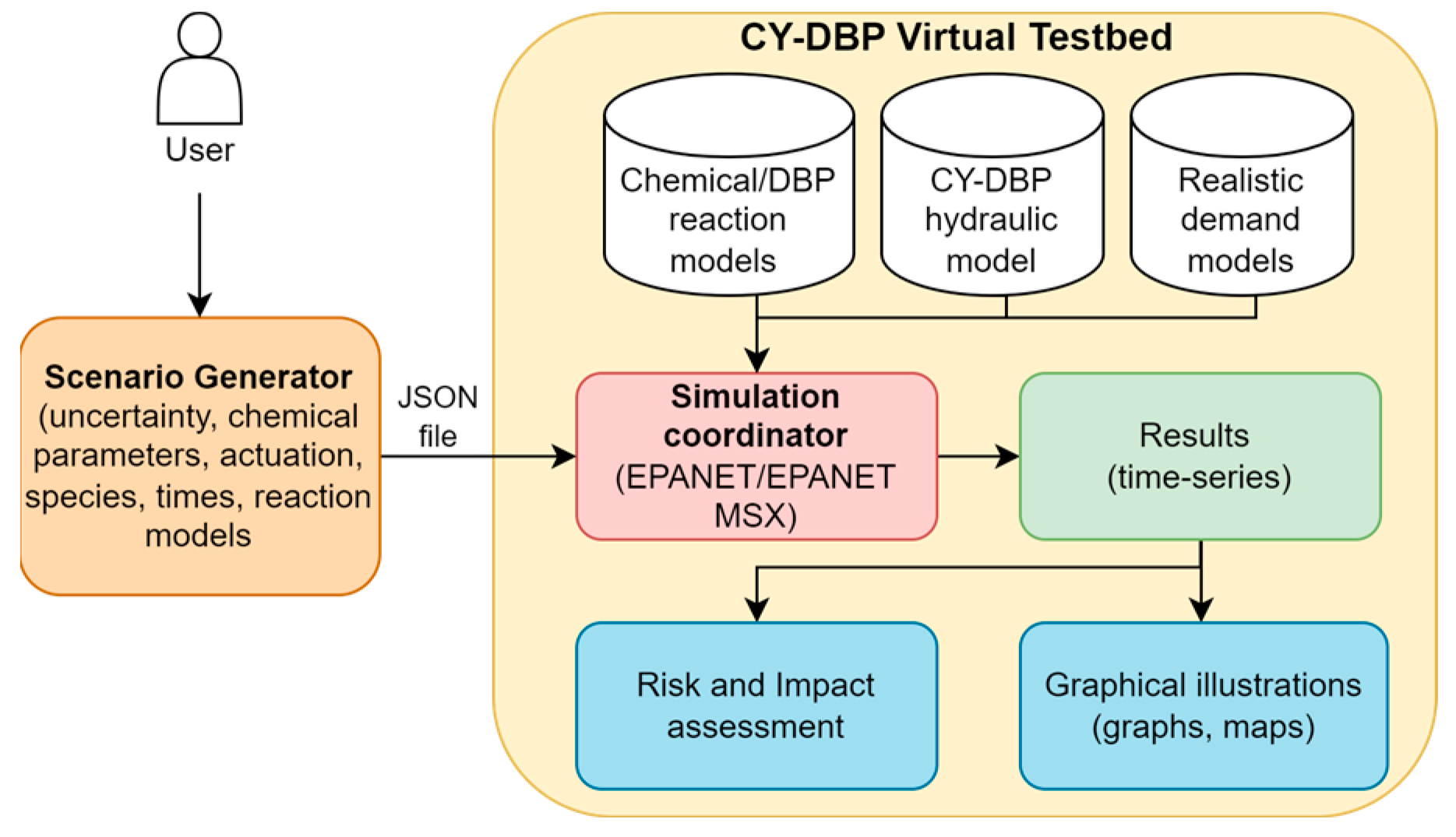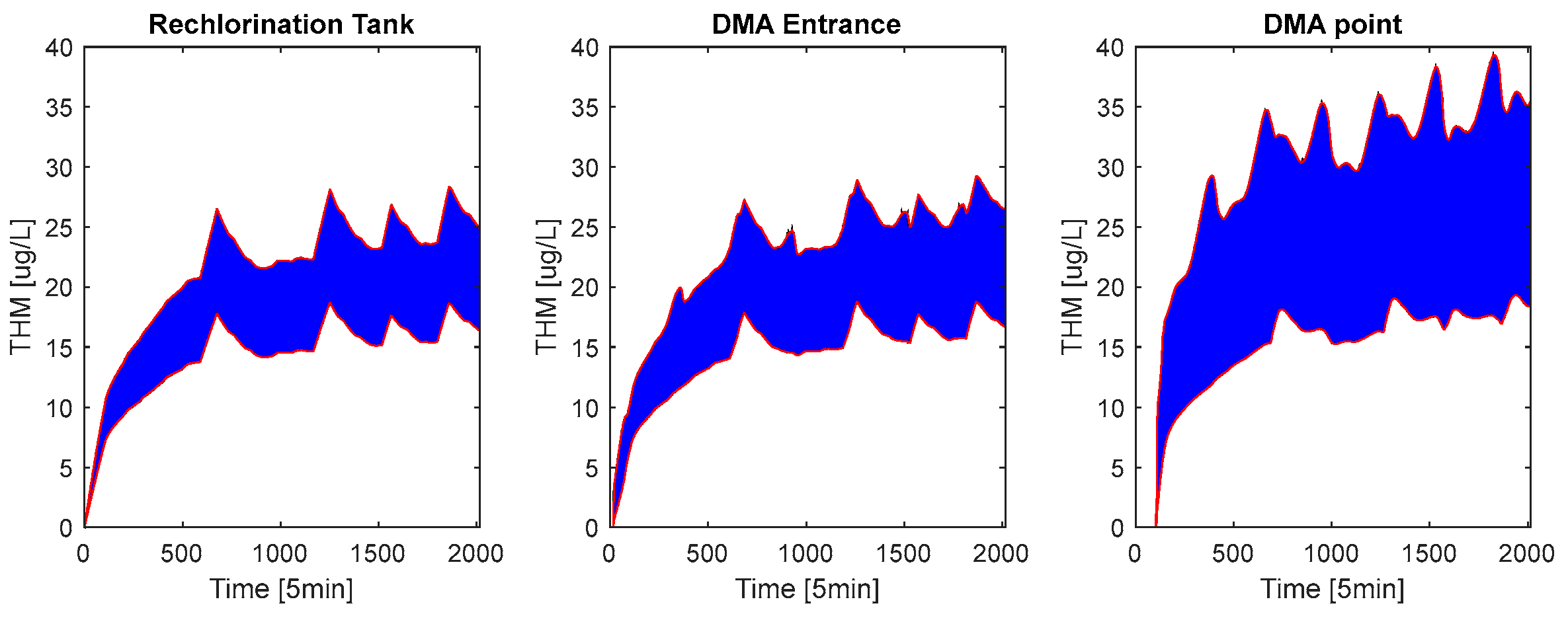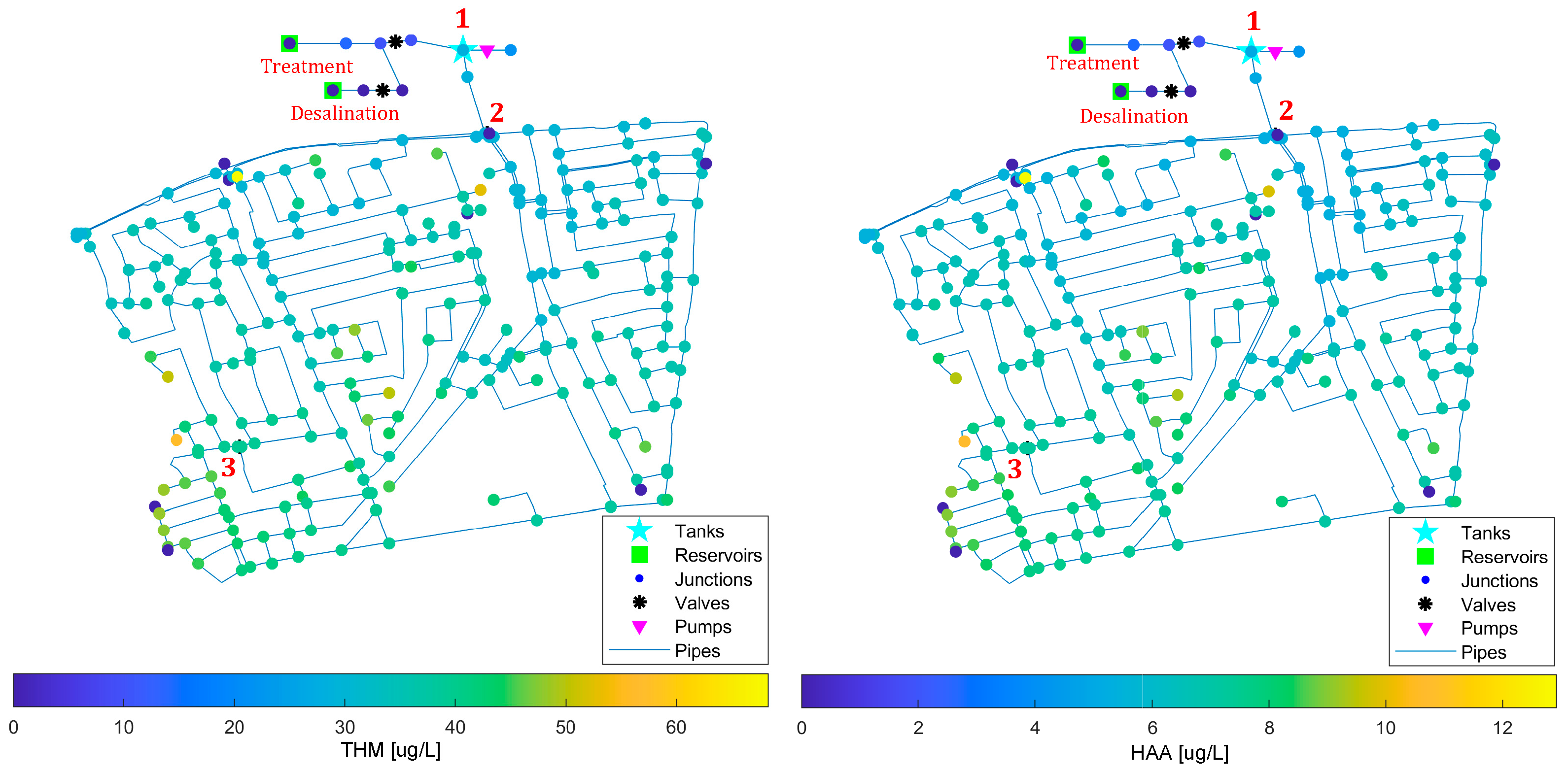A Comprehensive Virtual Testbed for Modeling Disinfection Byproduct Formation in Water Distribution Networks †
Abstract
:1. Introduction
2. Materials and Methods
2.1. Benchmark Network
2.2. Virtual Testbed Design
2.3. Water Quality Dynamics
3. Results
4. Conclusions
Author Contributions
Funding
Institutional Review Board Statement
Informed Consent Statement
Data Availability Statement
Conflicts of Interest
References
- Kyriakou, M.; Eliades, D.G.; Polycarpou, M.M. dbpRisk: Disinfection By-Product Risk Estimation. In Proceedings of the Critical Information Infrastructures Security (CRITIS), Limassol, Cyprus, 13–15 October 2014. [Google Scholar] [CrossRef]
- Sathasivan, A.; Kastl, G.; Korotta-Gamage, S.; Gunasekera, V. Trihalomethane species model for drinking water supply systems. Water Res. 2020, 184, 116189. [Google Scholar] [CrossRef] [PubMed]
- Premarathna, S.M.; Kastl, G.; Fisher, I.; Sathasivan, A. Model for halo-acetic acids formation in bulk water of water supply systems. Sci. Total Environ. 2023, 857, 159267. [Google Scholar] [CrossRef] [PubMed]
- Fisher, I.H. Integrated EPANET-MSX process models of chlorine and its by-products in drinking water distribution systems. Water Environ. Res. 2023, 95, e10949. [Google Scholar] [CrossRef] [PubMed]
- Eliades, D.G.; Kyriakou, M.; Vrachimis, S.G.; Polycarpou, M.M. EPANET-MATLAB Toolkit: An Open-Source Software for Interfacing EPANET with MATLAB. In Proceedings of the Computing and Control for the Water Industry (CCWI), Amsterdam, The Netherlands, 7–9 November 2016. [Google Scholar] [CrossRef]
- Fisher, I.; Kastl, G.; Sathasivan, A. A comprehensive bulk chlorine decay model for simulating residuals in water distribution systems. Urban. Water J. 2017, 14, 4. [Google Scholar] [CrossRef]
- Fisher, I.; Kastl, G.; Sathasivan, A. New model of chlorine-wall reaction for simulating chlorine concentration in drinking water distribution systems. Water Res. 2017, 125, 427–437. [Google Scholar] [CrossRef] [PubMed]




Disclaimer/Publisher’s Note: The statements, opinions and data contained in all publications are solely those of the individual author(s) and contributor(s) and not of MDPI and/or the editor(s). MDPI and/or the editor(s) disclaim responsibility for any injury to people or property resulting from any ideas, methods, instructions or products referred to in the content. |
© 2024 by the authors. Licensee MDPI, Basel, Switzerland. This article is an open access article distributed under the terms and conditions of the Creative Commons Attribution (CC BY) license (https://creativecommons.org/licenses/by/4.0/).
Share and Cite
Pavlou, P.; Kyriakou, M.; Vrachimis, S.G.; Eliades, D.G. A Comprehensive Virtual Testbed for Modeling Disinfection Byproduct Formation in Water Distribution Networks. Eng. Proc. 2024, 69, 33. https://doi.org/10.3390/engproc2024069033
Pavlou P, Kyriakou M, Vrachimis SG, Eliades DG. A Comprehensive Virtual Testbed for Modeling Disinfection Byproduct Formation in Water Distribution Networks. Engineering Proceedings. 2024; 69(1):33. https://doi.org/10.3390/engproc2024069033
Chicago/Turabian StylePavlou, Pavlos, Marios Kyriakou, Stelios G. Vrachimis, and Demetrios G. Eliades. 2024. "A Comprehensive Virtual Testbed for Modeling Disinfection Byproduct Formation in Water Distribution Networks" Engineering Proceedings 69, no. 1: 33. https://doi.org/10.3390/engproc2024069033






